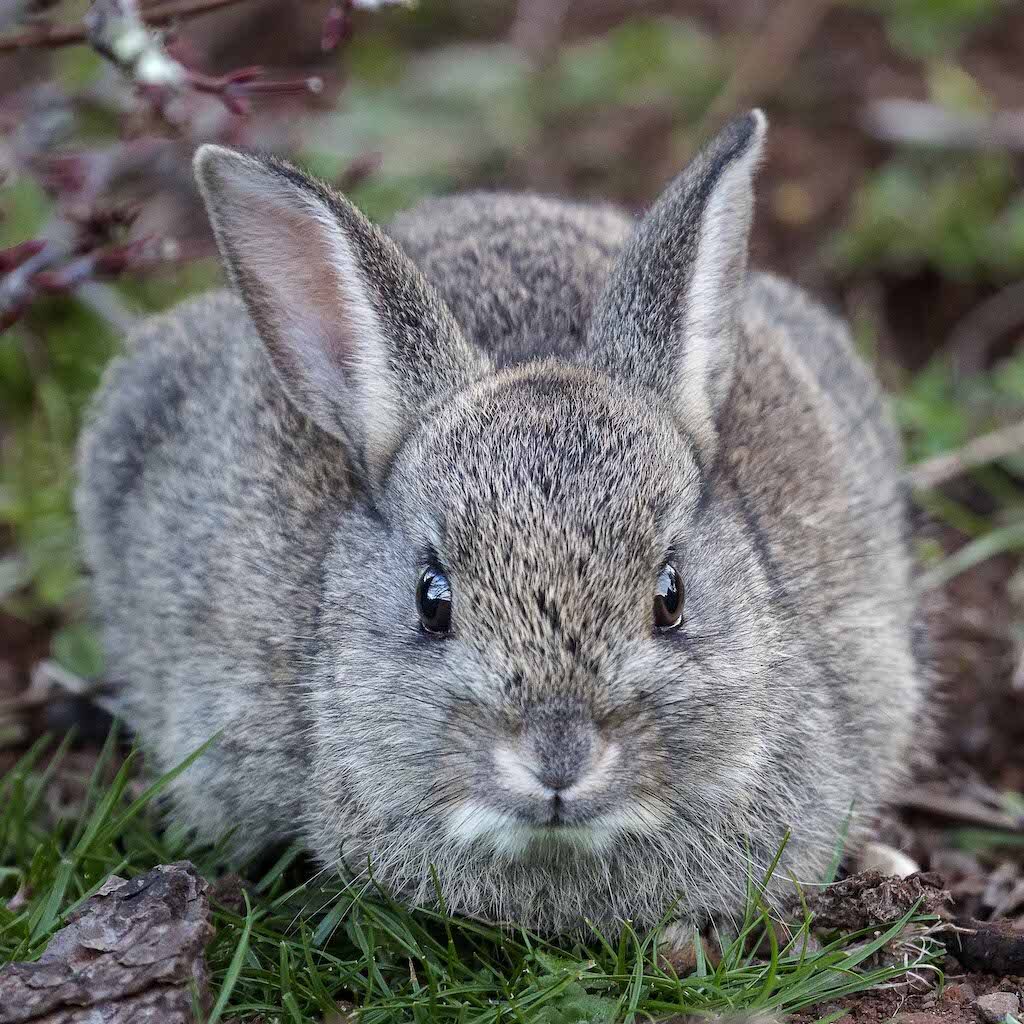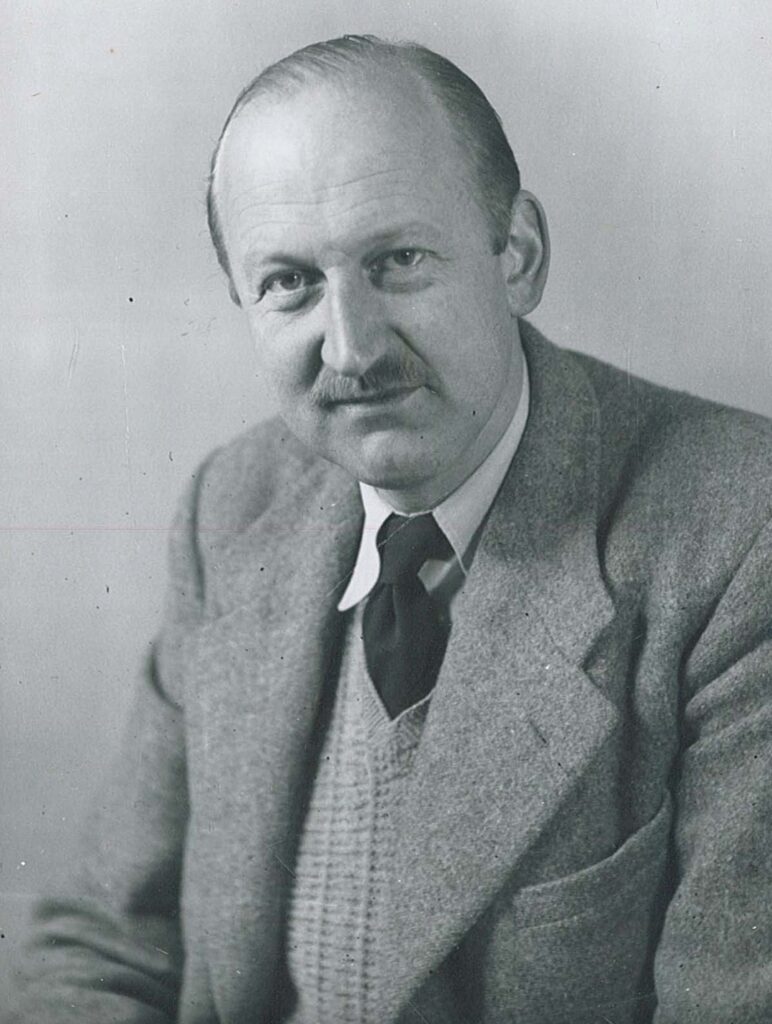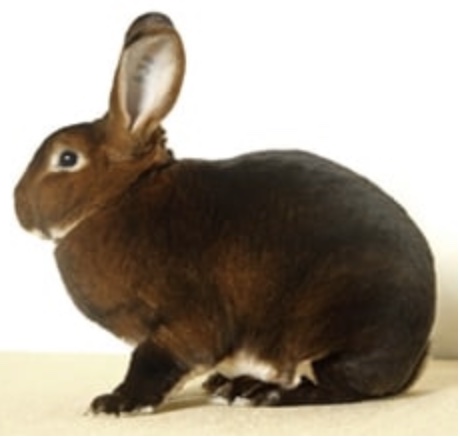Over the years, rabbits have generated considerable interest in Tasmania. No wonder, for such a small state, it was estimated there were 40 million of them running around in 1953 just prior to the introduction of myxomatosis and large-scale poisoning using 1080. According to Richard Hilder, wild rabbits were first seen on the north-west coast near Forth in 1878.
The north coast of Tasmania supported the largest rabbit populations in the state. Rabbits found near Myalla were famous for being the second largest in Australia, with those from the Mildura district on the Murray being the largest.
Rabbits are known to quickly adapt to the environment they grow up in. It can lead to a considerable diversity, particularly in size and colour. This is not surprising for such a prolific and quickly maturing animal.
As pointed out by Geoff below, Professor Horace Barber studied the colour mutations of rabbits at Parrawe. Barber was an imposing figure, standing at over two metres tall. He was known as a gifted thinker and writer and was the first Tasmanian resident since 1854 to be elected a Fellow of the Royal Society.
A mallee endemic to Tasmania in the central east is named after Professor Barber called Eucalyptus barberi. He had a keen interest in eucalypts and whilst in Tasmania, he was the first to investigate this species.
Barber’s study was interesting particularly as he was a Professor of Botany at the University of Tasmania. While he pioneered the use of genetic mutants to study plant development, he used his knowledge of cytogenetics to lead studies on animals including chromosome counts of Tasmanian marsupials. So it is not surprising he extended his work to rabbits.
Similar studies have been carried out on brush-tailed possums. Eric Guiler and Doris Banks found the frequency of black coloured possums in Tasmania increased with humidity, as shown by vegetation type rather than by rainfall.
I touched on the development of Parrawe in a previous post where the arrival of rabbits in the 1930s “were the death knell for Parrawe as they ate out the good pasture and cattle struggled on the remaining inferior grasses and weeds”.
Geoff’s story adds another interesting angle to the story of Parrawe and their pesky rabbits.
There have been different dates published for the initial clearing and selection of agricultural land at Parrawe. Geoff refers to the wonderful book by Bessie Smith and Margaret Pegus on Yolla’s history. Sons of the Yolla and Elliott pioneers were the first settlers at Parrawe for summer grazing, with many going on to actually live there. A newspaper article from 1910 confirms the selection of 3,000 acres at Parrawe in lots varying from 100 to 200 acres during that year.
In 2010, two new colour variations appeared in the population of wild rabbits at our home in Romaine – one had a white blaze on its nose and the other had white socks. This reminded me of a story about Parrawe’s moment in the sun, and it was all about the proportion of black rabbits.

In the 1950s, an article, including research results from Parrawe, was published in the scientific journal Nature which was, and still is, well-known and highly regarded. The article would have been read by thousands of scientists around the world.
Parrawe sits astride the Murchison Highway south of Hellyer Gorge, is 20 km south of Oonah and 20 km west of St Valentines Peak. No longer on the main highway, it is hard to believe there was a school during 1934–57 and that about 50 families appeared on the roll.
Around 1905–10 farmers from Yolla selected cattle runs, of about 80 ha, and began to establish pasture (with no rabbits at the time)[1].
Blocks were heavily forested, and machinery was not so available then, so that many blocks were manually felled and had blackened stumps and partially burnt-out logs—ideal cover, for small black rabbits.
The situation, as explained to me, was that the colour black appears naturally, in a low proportion, due to random mutations in the rabbit genes. In areas that are fully clear of trees and stumps, the colour black will stand out and kittens will be easily seen and taken by birds of prey. In areas with blackened debris the black kittens are harder to see and stand a much greater chance of survival. In consequence of this selection process, the proportion of black rabbits at Parrawe became quite high. This was supposedly an early example of the activities of people influencing the frequency of a gene in a population.
For thirty years or more, I did not know the author, date or title for the article, nor anyone who had read it. With modern search methods I now know that it was authored by Professor H. N. Barber of the University of Tasmania. About 10,000 rabbits were recorded, and Parrawe was just one of many areas sampled, some others being Hampshire, Nietta, the Great Lakes and Deloraine. By the 1950s Parrawe had 25–30 per cent black rabbits. In general, the high frequencies of black rabbits were associated with clearing of heavy forest at about 450–750 metres altitude. Birds of prey were discussed in the article, but no local evidence was provided. Other authors were reporting similar findings with the frequency of black possums.

Barber states that the clearing occurred between 1915 and 1925, with the implication that it was part of a soldier settlement scheme. However, Bessie Smith and Margaret Pegus, in their book on the history of Yolla, provide evidence that this was not the case. It took place during 1905–1910 when farmers, mainly from Yolla, took up selected blocks of about 80 hectares as winter runs for their cattle.
[1] Smith, Bessie & Pegus, Margaret, (1993) “A New Frontier”, in Yolla: the first century, page 30 [Libraries Tasmania, TAS REF 994.636.SMI]

Great article. Thanks to Rob and Geoff.
Keep them coming!
I was privileged to have met Bessie Smith on numerous occasions and I was a neighbour of Bob and Bert Smith, her two brothers.
I listened to Bob many times talk of stories of his cattle run at Parrawe, and his exploits of taking rabbits for sale to Waratah and Mt Magnet by pushbike.